Imagine stepping into your kitchen and plucking fresh basil for your pasta or snipping mint leaves for a refreshing tea. Creating a DIY herb garden not only brings the freshest flavors to your table but also offers a touch of nature’s serenity to your living space. Whether you’re planting your very first seeds or have a well-tended garden, cultivating herbs is a rewarding endeavor that suits any level of gardening experience. These small but mighty plants are as adaptable as they are aromatic, making them perfect companions for both seasoned green thumbs and those just beginning their gardening journey.
In this article, we’ll guide you through the essentials of starting your own herb garden, from selecting the right herbs to understanding their unique needs. You’ll discover how to make the most of your available space, whether you have a sprawling backyard or a cozy windowsill. With practical tips and step-by-step instructions, you’ll gain the confidence to nurture your plants and enjoy the myriad benefits they offer. By the end, you’ll be well-equipped to cultivate a vibrant garden that delights your senses and enriches your culinary creations.
Herbs are more than just plants; they’re a gateway to endless culinary possibilities and a sustainable way to enhance your meals. We’ll explore how to care for your herbs, ensuring they flourish throughout the seasons, and share tips on harvesting to maximize their flavor and longevity. As you embark on this herbal adventure, you’ll connect with nature in a meaningful way and transform your space into a lush, fragrant haven. So, let’s dig in and unlock the secrets to creating a thriving herb garden that brings joy and flavor year-round.
Select Suitable Herb Varieties
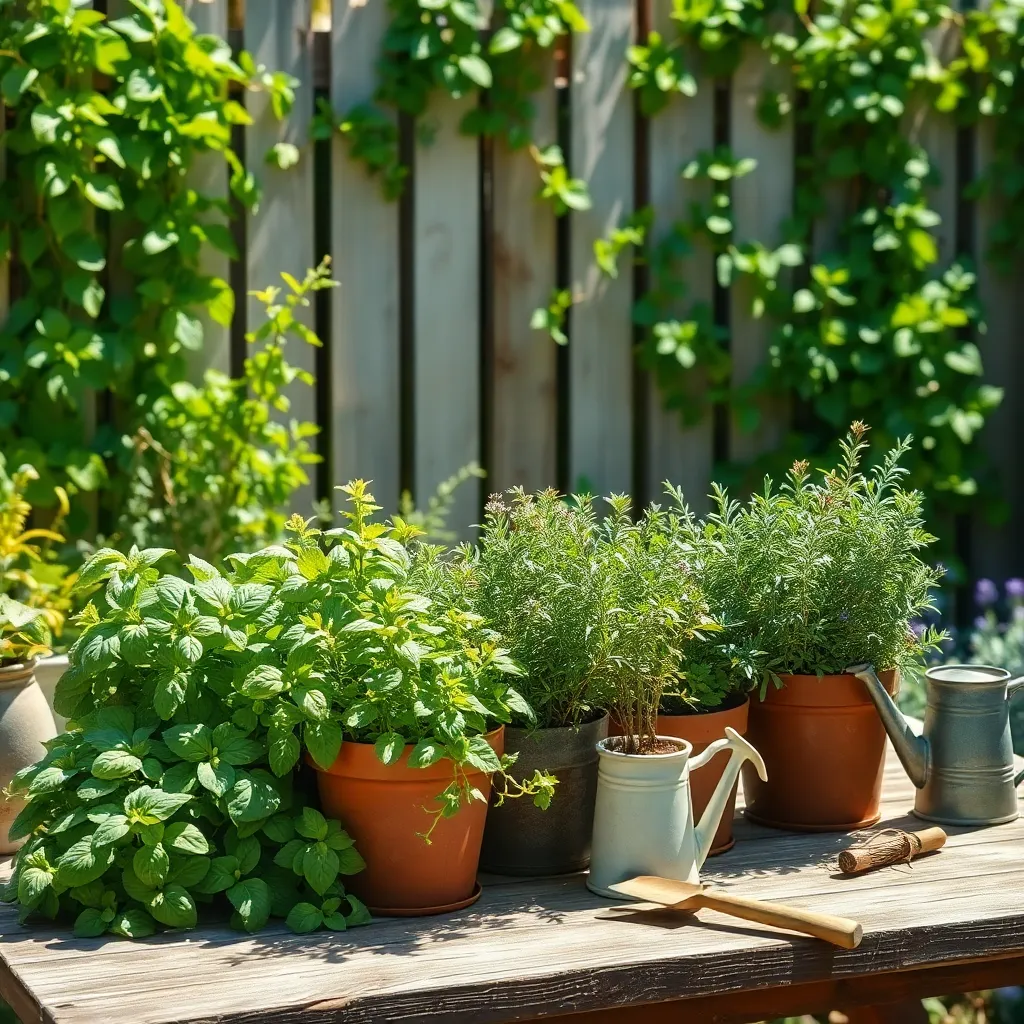
When selecting herbs for your DIY garden, consider your local climate and the sunlight availability in your space. For instance, basil thrives in warm environments with full sun, while mint can tolerate partial shade and cooler conditions.
To ensure success, choose herbs that will thrive in your soil type and climate. Most herbs prefer well-draining soil; adding organic matter like compost can improve drainage and nutrient content.
Beginners might start with easy-to-grow herbs like parsley, cilantro, and chives, which can flourish in a variety of conditions. More experienced gardeners can experiment with less common varieties, such as lemon verbena or tarragon, which require specific care and conditions.
Regular watering is crucial, but be mindful of each herb’s needs—some prefer drier conditions. Herbs like rosemary and thyme do better with less water, whereas basil and parsley need consistent moisture.
Prepare a Well-Draining Container
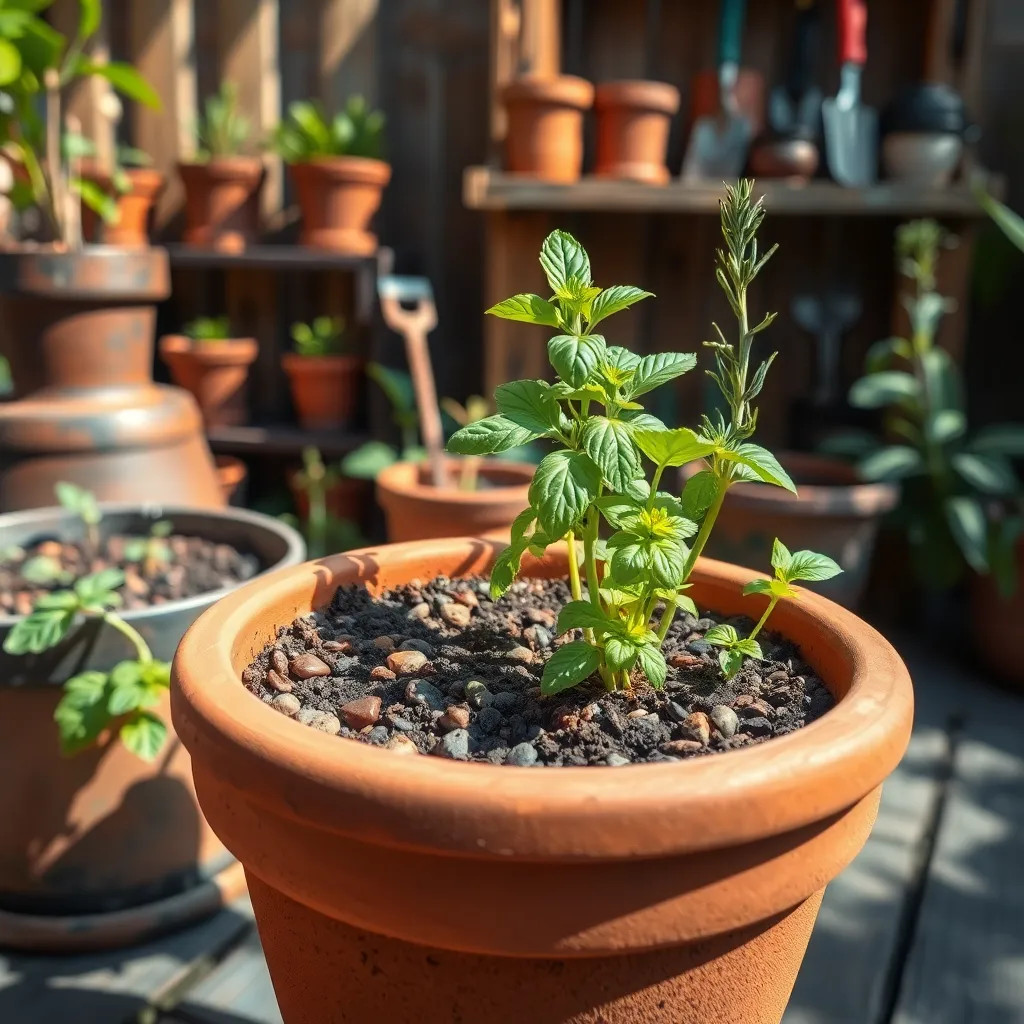
Creating a well-draining container is essential for a thriving DIY herb garden. Begin by choosing a container with drainage holes at the bottom to prevent waterlogging, which can lead to root rot.
Next, use a high-quality potting mix designed for container gardening. Look for a mix that includes components like perlite or vermiculite to enhance drainage and aeration, ensuring a healthy root environment.
Layering is a smart technique to further improve drainage. Place a layer of coarse gravel or broken pottery pieces at the bottom of the container before adding the potting mix.
Water the herbs thoroughly after planting, but allow the top inch of soil to dry out between waterings. This practice helps prevent overwatering, a common issue for beginners.
Use Quality Potting Mix
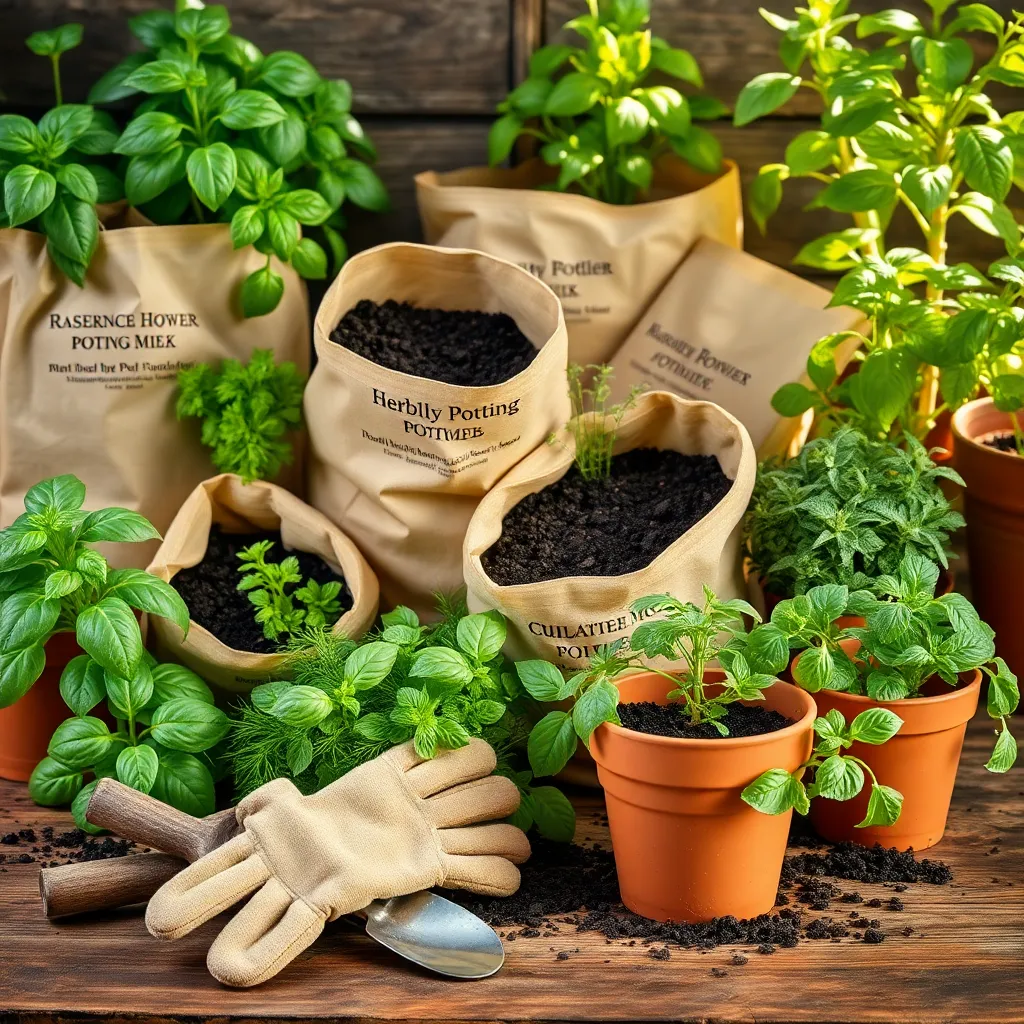
Choosing the right potting mix is essential for a thriving DIY herb garden. A quality potting mix provides the perfect balance of nutrients, aeration, and moisture retention, which is crucial for healthy plant growth.
Look for a potting mix that contains ingredients such as peat moss, vermiculite, or perlite. These components help to ensure that your herbs receive adequate drainage while maintaining sufficient moisture.
For those looking to grow organic herbs, consider using a certified organic potting mix. Such mixes are free from synthetic fertilizers and pesticides, making them ideal for herbs you plan to use in cooking.
Experienced gardeners might consider customizing their potting mix by adding compost or worm castings. This can enhance the nutrient content and improve the soil’s structure, giving your herbs a robust start.
When filling your container, make sure to leave about an inch of space from the rim to prevent overflow during watering. This practice helps in maintaining a clean growing area and facilitates easier watering sessions.
Plant Herbs with Proper Spacing
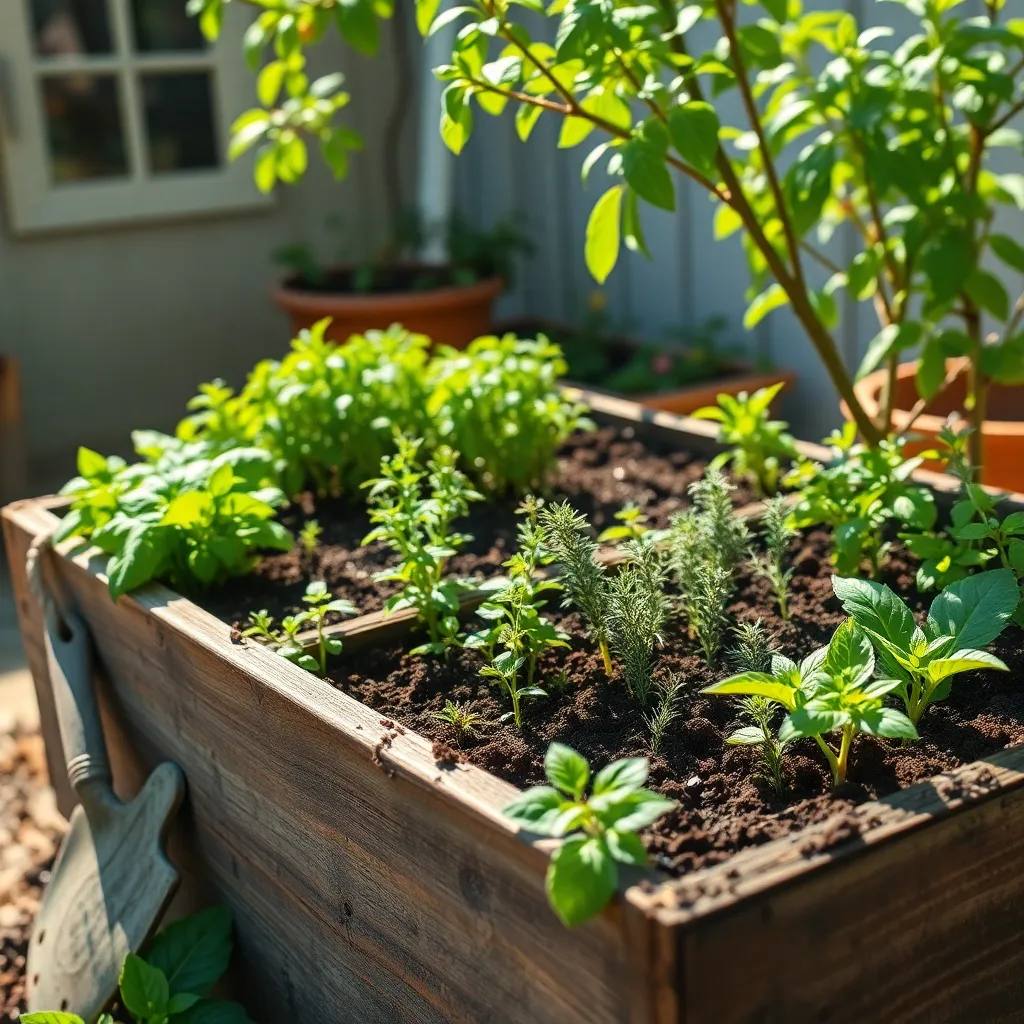
Proper spacing is crucial for a thriving herb garden, as it ensures each plant has enough room to grow. Overcrowding can lead to diseases and stunted growth due to poor air circulation. Consider the mature size of each herb when planting; for instance, basil should be spaced about 12 to 18 inches apart. This allows the plant to reach its full potential and ensures easy access for harvesting.
For herbs like thyme and oregano, space them about 8 to 12 inches apart. These smaller herbs can quickly fill in gaps and provide excellent ground cover. Remember to adjust the spacing based on the variety and growth habits of your herbs. This is especially important when mixing different types of herbs in a single container or raised bed.
When planting in containers, be mindful of the pot size and the number of herbs you intend to grow. A container with a diameter of at least 12 inches is ideal for a single herb plant like rosemary, which needs space to spread out. If you’re planting multiple herbs in one pot, select those with similar water and light requirements to ensure harmonious growth.
Advanced gardeners might experiment with companion planting, where certain herbs are combined to enhance growth or repel pests. For example, planting basil near tomatoes can improve flavor and deter insects. Spacing still matters here, as each plant requires adequate room to thrive without competing for resources. Incorporate mulch between your herbs to retain moisture and reduce weed growth, benefiting the overall health of your garden.
Ensure Adequate Sunlight and Water
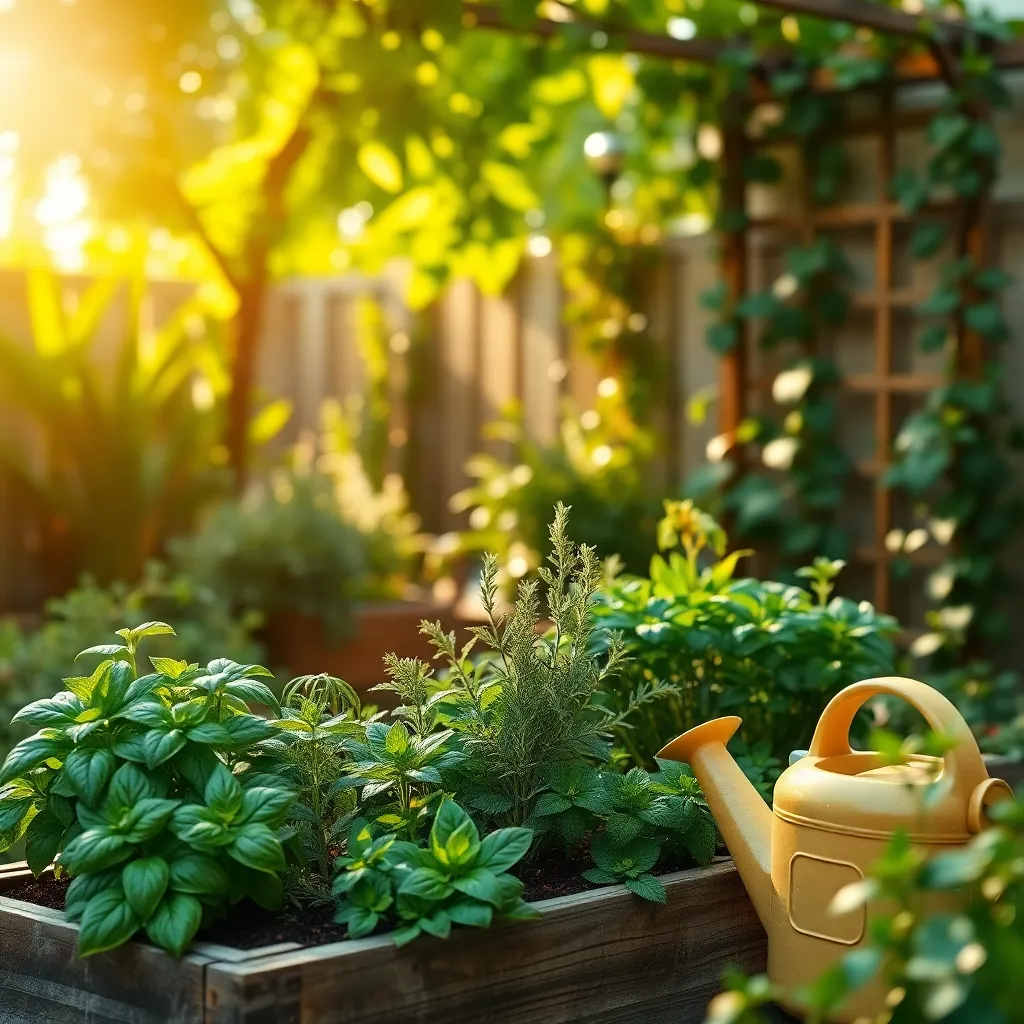
To ensure your DIY herb garden thrives, it’s crucial to provide adequate sunlight, as most herbs require full sun to grow optimally. Position your garden in an area that receives at least six to eight hours of sunlight per day, such as a south-facing window or outdoor space with unobstructed light.
Different herbs have varying sunlight needs, so it’s essential to tailor your approach. For instance, while basil and rosemary thrive in full sun, herbs like mint and parsley can tolerate partial shade, making them suitable for spots with dappled or afternoon sun.
Watering is another key factor in maintaining a healthy herb garden. Herbs generally prefer well-draining soil, so ensure your containers have drainage holes and use a potting mix that retains moisture yet allows excess water to escape. A good rule of thumb is to water when the top inch of soil feels dry, which typically translates to once or twice a week, depending on your climate and the season.
For those looking to refine their watering technique, consider investing in a soil moisture meter to prevent over-watering, which can lead to root rot. Advanced gardeners might experiment with mulching around herbs to conserve moisture and maintain stable soil temperatures, especially during hot summer months.
Conclusion: Growing Success with These Plants
In building your DIY herb garden, you’ve also cultivated essential relationship skills: communication, teamwork, patience, nurturing, and appreciation. By discussing and planning your garden together, you’ve honed your communication and teamwork. As the plants grow, your patience and nurturing are tested, mirroring the care needed in relationships. Finally, by appreciating each small sprout, you learn to value progress, no matter how minor it seems.
Your next step? Choose one herb to plant together today, symbolizing a shared goal in your relationship. Whether it’s basil for its culinary versatility or mint for its refreshing quality, let it serve as a reminder of your commitment to grow together.
Bookmark this article now, so these insights remain at your fingertips whenever you need a reminder of the parallels between gardening and nurturing a relationship. As you watch your herb garden flourish, envision your relationship thriving with the same dedication and care. Remember, the seeds you plant today—both in the garden and in your relationship—are the roots of tomorrow’s successes. Embrace the journey, knowing each step brings you closer to the flourishing relationship you desire.
